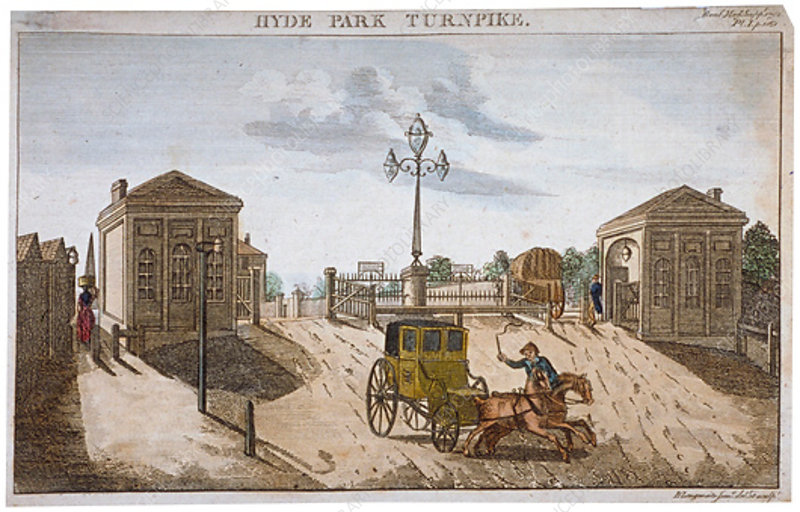Even though it has been a dry summer, the roads near my house are full of pot-holes thanks to a wet winter and not much money spent on road maintenance. But how were roads and highways maintained in the Stuart Era?

Most goods were transported from the ports to the interior of the country by pack horses and so tracks were the routes most commonly followed. There were no signposts in the 17th Century, so you had to either know the route already or employ a guide. Most roads passed through areas that were still deeply forested, and would in no way resemble the sort of roads we have now. In Henry VIII's reign the use of the heavy waggon and springless cart became more common, and as prosperity increased there was more need for wider roads. A large waggon was also more economical for transporting items in bulk. The dust surface of these new broad roads became mud in winter, and so in 1555 the Statute of Philip and Mary was passed which provided a strategy for maintaining the roads.
 |
| 17th Century routes through the towns and forests of England, hunting horns denote forests |
This system did not work particularly well and meant roads were often impassable in bad weather. Particularly bad were the routes in and out of the capital. But in 1656, tired of the responsibility of maintaining The Great North Road, the people of Radwell in Hertfordshire petitioned the Quarter Sessions for help, because this was the major route in and out of London. Probably as a result of this, Parliament passed a bill that gave the local justices powers to erect toll-gates on a section of the Great North Road for a trial period of eleven years, and allowed that the revenues collected should be used for the maintenance of the road.
This being a success, to assist in the repair of roads, after 1663 groups of wealthy landowners were given permission by Parliament to build or improve a stretch of road and then charge tolls to get their money back, thereby allowing them to make a profit. These were called Turnpike Trusts. At first these toll roads were short and acted as short cuts, often bypassing a village and thus reducing its trade.
At some places along main roads, houses and gates were set up and a tollgate keeper lived alongside the route. These turnpikes continued to multiply slowly until by 1872, when the system was finally abolished, there were approximately 8000 turnpikes in operation.
A turnpike gate was a large gate which revolved on a spike and after the individual had paid his penny to use the turnpike the gate would revolve allowing access to the newly created turnpike road. Typical charges in the 17th Century were one penny for a horse and sixpence for a coach. Exempt from the charges were mail coaches, foot passengers and people in a funeral cortege. Because it was possible for brave horsemen to leap over the gates without paying, the gate was sometimes replaced by what soon became known as a 'turnpike': a wooden bar with spikes on top.
Of course I will have to include this sort of a leap over a Turnpike in my next book!
This being a success, to assist in the repair of roads, after 1663 groups of wealthy landowners were given permission by Parliament to build or improve a stretch of road and then charge tolls to get their money back, thereby allowing them to make a profit. These were called Turnpike Trusts. At first these toll roads were short and acted as short cuts, often bypassing a village and thus reducing its trade.
 |
| 18thC print of Hyde Park Turnpike Gate |
A turnpike gate was a large gate which revolved on a spike and after the individual had paid his penny to use the turnpike the gate would revolve allowing access to the newly created turnpike road. Typical charges in the 17th Century were one penny for a horse and sixpence for a coach. Exempt from the charges were mail coaches, foot passengers and people in a funeral cortege. Because it was possible for brave horsemen to leap over the gates without paying, the gate was sometimes replaced by what soon became known as a 'turnpike': a wooden bar with spikes on top.
Of course I will have to include this sort of a leap over a Turnpike in my next book!

















I am stoked to have run across this novel tonight. I'm a deaf book reviewer, so I'm dying to ask, did you have any trouble writing from a deaf heroine's POV? I'm guessing you chose this route because the real-life Katherine must have had a deaf servant? Anyway, would love to have you guest on my blog and talk about this. Brilliant idea!
ReplyDelete